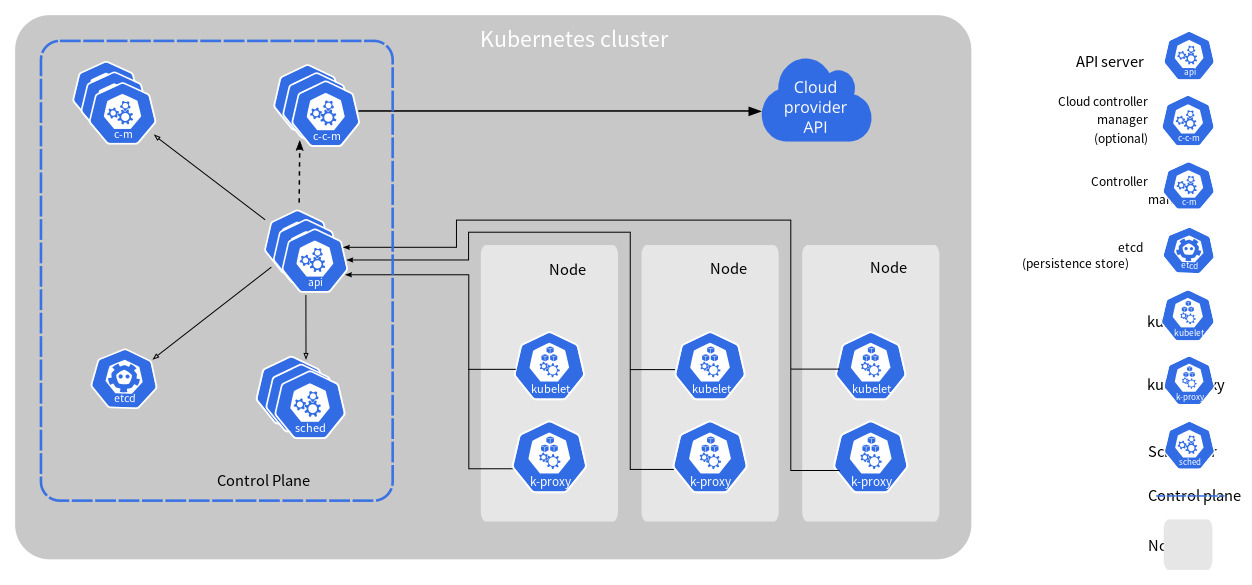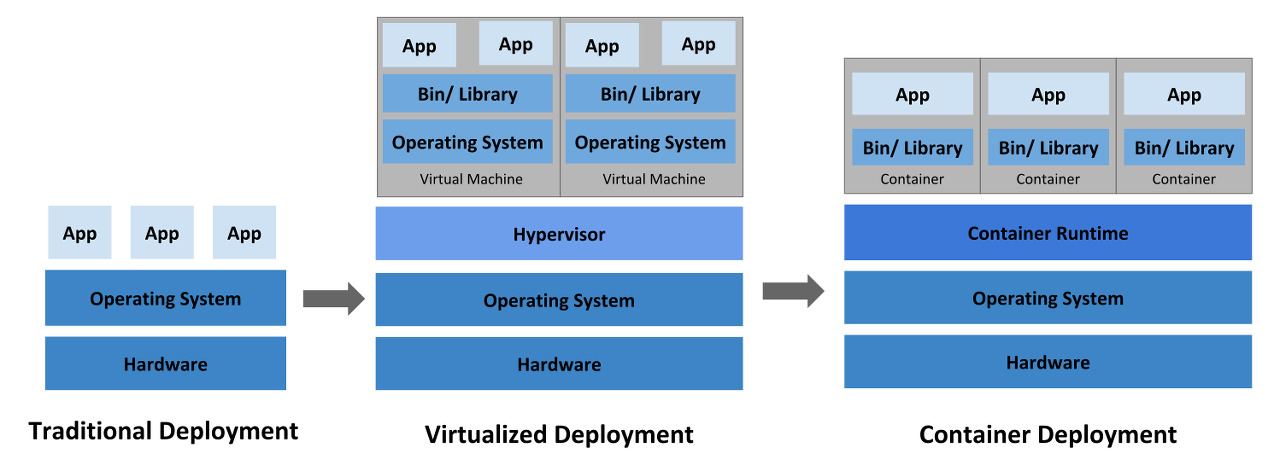Kubernetes architecture is built to manage the lifecycle and operations of containerized applications across diverse infrastructure. Kubernetes not only simplifies cloud application deployment but also offers a robust framework for operational excellence in the cloud era.
Kubernetes, at its core, orchestrates containerized applications across a cluster of machines. This orchestration allows for high availability, fault tolerance, and scalability in deploying applications. Let’s dissect the key components that make Kubernetes an essential tool for managing distributed systems.
This document outlines the various components you need to have for a complete and working Kubernetes cluster.

The Foundation: Clusters and Nodes
A Kubernetes Cluster is a set of nodes that run containerized applications. These nodes are the workhorses of a Kubernetes cluster, where:
- Worker Nodes host the Pods—the smallest deployable units that can be created and managed in Kubernetes.
- Control Plane Nodes manage the state of the cluster, including scheduling applications, maintaining applications' desired state, scaling applications, and rolling out new updates.
Understanding these components is crucial for anyone looking to specialize in cloud computing or distributed systems.
Control Plane Components: The Brain Behind the Operation
The control plane is responsible for making global decisions about the cluster and reacting to cluster events. Its components include:
- kube-apiserver: This acts as the front end to the cluster’s control plane. It exposes the Kubernetes API, which is the primary management interface of Kubernetes. The kube-apiserver is designed to scale horizontally, ensuring Kubernetes can manage and scale applications efficiently.
- etcd: A highly available key-value store used for all cluster data, ensuring there's a reliable source of truth for the state of the cluster. Proper management of etcd is crucial for cluster health and data integrity.
- kube-scheduler: Responsible for assigning newly created Pods to Nodes, taking into account the operational requirements of the workloads and the current infrastructure's state.
- kube-controller-manager: Runs controller processes that monitor the state of the cluster through the apiserver and make changes aiming to move the current state towards the desired state.
- cloud-controller-manager: Integrates the cluster into the cloud provider's API, allowing Kubernetes to interact with the underlying infrastructure when necessary.
These components ensure the cluster is behaving as intended, handling scheduling, and interacting with underlying infrastructure.
Node Components: The Muscle Doing the Heavy Lifting
Each node in a cluster runs several mandatory components:
- kubelet: Ensures that containers are running in a Pod. It starts, stops, and maintains application containers organized into Pods as directed by the control plane.
- kube-proxy: Maintains network rules on nodes, allowing communication to your Pods from network sessions inside or outside of your cluster.
- Container Runtime: The software responsible for running containers. Kubernetes supports several container runtimes, like containerd and CRI-O.
These components are essential for the actual running of applications on the physical or virtual machines within the cluster.
'ML Engineering > Kubernetes' 카테고리의 다른 글
| Kubernetes - Overview I (0) | 2024.04.05 |
|---|
